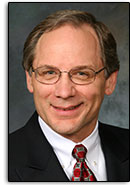The destruction wrought by Hurricane Sandy prompted a key question: did smart grid technology help utilities restore power faster?
The answer requires a little nuance, but it underscores the value of investments in distribution automation (DA).
DA’s greatest value
DA is designed to improve reliability in everyday circumstances – the so-called ‘blue sky’ days – and it is the single most valuable investment a utility can make. Now, let’s examine the nuances.
Extreme weather’s physical destruction of grid assets can impact DA components such as switches and sectionalizers as well. DA components that remain in service, however, definitely aid subsequent service restoration. DA’s greatest value lies in its consistent, year-round service, restoring more typical interruptions, such as vehicle-utility pole accidents, grid equipment failures and other mundane events.
DA can take several forms, from a holistic set of integrated systems to targeted technology deployments that address very specific reliability challenges. Every utility must determine its own technology roadmap based on its regulatory drivers, its legacy system and its reliability and resiliency issues. The business case must make sense.
The holistic approach: five components
Five components comprise a holistic DA system: smart meters, advanced metering infrastructure (AMI), an outage management system (OMS), a distribution management system (DMS) and a geographic information system (GIS). DA itself is an application that runs on the SCADA platform, , enabling a suite of distribution software applications, such as fault detection, isolation and restoration (FDIR), integrated volt/VAR control (IVVC), optimal feeder reconfiguration (OFR) and distribution power analysis (DPA) running on the SCADA platform. The SCADA platform and the suite of applications are the DMS.
Smart meters and AMI provide usage and billing data, but also premise-level voltage readings and a ‘last gasp’ communication indicating an outage. Customers can provide outage data via smartphones and social media, becoming part of the restoration process, which makes them more tolerant of service anomalies.
An OMS hosts the network model (populated by GIS data on utility assets and their geographic location) that provides operators with details on affected customers. The DMS, informed by meter data, can address voltage and VARs. The DMS consists of the aforementioned advanced applications integrated on a SCADA platform.
DA is enabled by centralized and/or distributed intelligence, two-way data networks and sensors and switches on the distribution network. Properly integrated, these five systems achieve a value far greater than their sum.
FDIR
One advanced application that resides on the DMS is FDIR: fault detection, isolation, and restoration. FDIR logic can be centralized at the operations center, substation-based or peer-to-peer among intelligent electronic devices (IEDs) residing on feeders. The application’s logic is first tested and approved by a human operator; eventually it is automated to increase the speed of restoration. Obviously, whether in typical circumstances or in a storm, automation provides the speed that will improve a utility’s reliability performance as measured by SAIDI and SAIFI.
Florida Power & Light (FPL)
FPL has pursued a holistic approach, driven by the fact that its 35-county service territory includes southern Florida, which lies in ‘Hurricane Alley.’ FPL has realized tremendous value in typical and extraordinary circumstances from its DA work, which consists of the five components including DA applications I’ve just described and culminates in a Distribution Performance and Diagnostic Center.
FPL spent four years and $800 million (including a $200 million U.S. DOE stimulus grant) in its ‘Energy Smart Florida’ program to deliver greater reliability to its 4.6 million accounts.
Alternatives and NSTAR
A targeted technology approach looks very different – there are sensors and switches installed downstream of the substations on distribution feeders. One DMS application is automated sectionalizing and automatic restoration or ASAR. It takes field data and implements preset switching plans designed to isolate faults, reroute power to minimize the extent of an outage and restore service to healthy sections of a feeder.
NSTAR Electric and Gas serves 1.1 million electric customers in eastern, central and southeastern Massachusetts and has been implementing successive DA technologies as they’ve become available. In 2010 NSTAR began extending ASAR across its service territory (with the help of a $10 million stimulus grant). The project included substation automation, 2,000 overhead and underground switches and 5,000 sensors downstream on distribution feeder lines.
NSTAR has seen its reliability indices improve over the project’s life and can also point to DA’s assistance in rapid restoration after both Tropical Storm Irene and Hurricane Sandy.
For instance, in 2011 during Tropical Storm Irene, NSTAR had 506,000 total customer interruptions and 232,000 customers were restored in less than one hour – that’s DA at work. The balance of 274,000 restorations required field crews and 10,000 work orders over five days in a street-by-street effort focused on downed trees and limbs – that’s the physical destruction that renders DA less effective.
Roadmaps
I’ve illustrated how a specific utility such as FP&L can address its entire system or use a DA application to address challenging circuits first, then scale it across the entire service territory, as NSTAR has done. The drivers and solutions are many. Every utility must develop its own roadmap and build its own, persuasive business case.
___________________
About the author
John D. McDonald is director of technical strategy and policy development at GE Digital Energy. He earned his B.S.E.E. and M.S.E.E. degrees specializing in power engineering at Purdue University and his MBA in finance at the University of California, Berkeley. He is past president of the IEEE Power & Energy Society (PES), an IEEE PES distinguished lecturer, board chair of the Smart Grid Consumer Collaborative and board chair for the Smart Grid Interoperability Panel 2.0, Inc., among many other affiliations.



